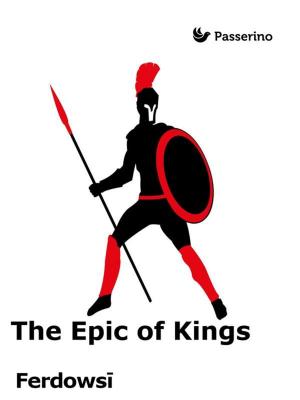Prometheus
Nonfiction, Entertainment, Drama, Continental European, Fiction & Literature, Literary Theory & Criticism, Classics| Author: | Johann Wolfgang Goethe | ISBN: | 9788899617288 |
| Publisher: | Passerino Editore | Publication: | November 11, 2015 |
| Imprint: | Language: | German |
| Author: | Johann Wolfgang Goethe |
| ISBN: | 9788899617288 |
| Publisher: | Passerino Editore |
| Publication: | November 11, 2015 |
| Imprint: | |
| Language: | German |
"Prometheus" ist eines der bekanntesten Gedichte von Johann Wolfgang von Goethe und wurde zwischen 1772 und 1774 verfasst. Wie auch die anderen Hymnen Mahomets Gesang, Ganymed, An Schwager Kronos entstand dieses Werk in der Epoche Goethes als Stürmer und Dränger. F.H. Jacobi druckte die Hymne erstmals in seiner Schrift „Über die Lehre des Spinoza in Briefen an den Herrn Moses Mendelssohn“ unautorisiert und anonym ab. Goethe nahm sie jedoch erst 1789 in seine neu edierten Schriften auf und ließ sie zusammen mit der Ganymed-Ode erscheinen. Die Form der Hymne ist eine lyrische Ausdrucksform, die dem Sturm und Drang am ehesten gerecht wird, denn in ihr treten mythische Figuren auf, die als Repräsentanten der Künstler des Sturm und Drang betrachtet werden können und die somit das Dilemma von Kunst und Leben verkörpern. Ein Hauptanliegen des Sturm und Drang ist das Überwinden von überkommenen Autoritäten, damit kann „Prometheus“ als programmatisch für diese Epoche gesehen werden.
Johann Wolfgang von Goethe (1749 - 1832) gilt als einer der bedeutendsten Repräsentanten der deutschsprachigen Dichtung.
"Prometheus" ist eines der bekanntesten Gedichte von Johann Wolfgang von Goethe und wurde zwischen 1772 und 1774 verfasst. Wie auch die anderen Hymnen Mahomets Gesang, Ganymed, An Schwager Kronos entstand dieses Werk in der Epoche Goethes als Stürmer und Dränger. F.H. Jacobi druckte die Hymne erstmals in seiner Schrift „Über die Lehre des Spinoza in Briefen an den Herrn Moses Mendelssohn“ unautorisiert und anonym ab. Goethe nahm sie jedoch erst 1789 in seine neu edierten Schriften auf und ließ sie zusammen mit der Ganymed-Ode erscheinen. Die Form der Hymne ist eine lyrische Ausdrucksform, die dem Sturm und Drang am ehesten gerecht wird, denn in ihr treten mythische Figuren auf, die als Repräsentanten der Künstler des Sturm und Drang betrachtet werden können und die somit das Dilemma von Kunst und Leben verkörpern. Ein Hauptanliegen des Sturm und Drang ist das Überwinden von überkommenen Autoritäten, damit kann „Prometheus“ als programmatisch für diese Epoche gesehen werden.
Johann Wolfgang von Goethe (1749 - 1832) gilt als einer der bedeutendsten Repräsentanten der deutschsprachigen Dichtung.















